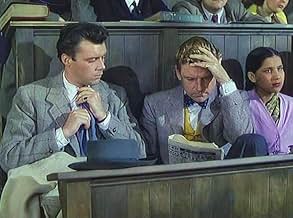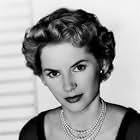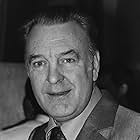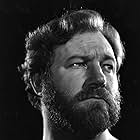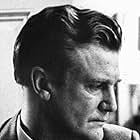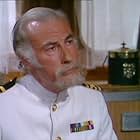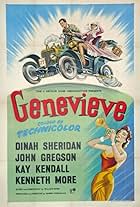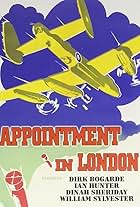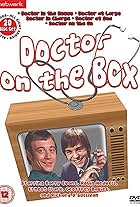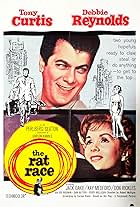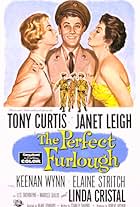IMDb RATING
6.6/10
1.7K
YOUR RATING
The trials and tribulations of a group of medical students at St. Swithin's hospital in London, England.The trials and tribulations of a group of medical students at St. Swithin's hospital in London, England.The trials and tribulations of a group of medical students at St. Swithin's hospital in London, England.
- Won 1 BAFTA Award
- 1 win & 4 nominations total
Gudrun Ure
- May
- (as Ann Gudrun)
Storyline
Did you know
- TriviaRobert Morley demanded a fee of fifteen thousand pounds sterling when offered the part of Sir Lancelot Spratt. As this would have constituted nearly one-sixth of this movie's proposed budget, the filmmakers instead hired James Robertson Justice at one-tenth the salary. Justice scored a great personal triumph in this movie, and played the role again in five sequels. It was to remain his best-known movie part.
- GoofsSimon Sparrow attends to a birth at Christmas, then almost immediately afterwards takes part in a rugby match in November. What's more the trees are in full summer foliage on the day of the match.
- Quotes
Sir Lancelot Spratt: You cut a patient he bleeds, until the processes of nature form a clot and stop it. This interval is known scientifically as the 'bleeding time'. You! What's the bleeding time?
Simon Sparrow: Ten past ten, sir.
- ConnectionsFeatured in Film Profile: Dirk Bogarde (1961)
Featured review
I never had the opportunity to sample the popular “Doctor” series lampooning the medical profession (the inspiration for which was a novel by Richard Gordon – not the horror film-producer) until now; while I thoroughly enjoyed this first (and universally best-regarded) entry, I can’t quite see how the typical farcical situations could be stretched for seven pictures – especially since the rival “Carry On” stable made four films of its own on the subject over the years! Interestingly, at least five members of the film’s cast and crew would become fixtures of that even more durable series – actresses Joan Sims and Shirley Eaton, composer Bruce Montgomery, cinematographer Ernest Steward, and editor Gerald Thomas (director Ralph’s brother who would actually proceed to helm all 31 “Carry On” outings!); incidentally, the entire run of “Doctor” films were similarly Ralph’s domain.
Still, this series clearly had a bigger budget since they were all made in color and attracted a roster of top British stars – none more impressive than the one assembled here: Dirk Bogarde (he would feature in four of these – amazingly, even after he had gone on to more adult roles such as the blackmailed homosexual barrister in VICTIM [1961]!), Kenneth More (his one stint in the series), James Robertson-Justice (whose Sir Lancelot Spratt – turning up in all seven pictures – would become his signature role), Donald Sinden (he was featured in one other entry), Donald Houston (ditto), Muriel Pavlow (she too appeared in one more “Doctor” film – for what it’s worth, she had just co-starred with Alec Guinness in MALTA STORY [1953], shot on location), Geoffrey Keen (who had three series entries to his name), Kay Kendall (in what amounts to an extended cameo – she had just scored her biggest success with GENEVIEVE [1953], coincidentally in the company of two other cast members from this one i.e. More and Keen!) and George Coulouris (a native of Britain, he got his break into films while in Hollywood – though he seemed to have relocated back home by this time and, in fact, would make another two “Doctor” movies).
If one were to compare the “Doctor” series with the “Carry Ons”, judging by this preliminary view of one entry from the former franchise, I’d say that these were essentially genteel (the same goes for GENEVIEVE, itself a classic of British comedy) – which, being aimed at middle-class audiences, stressed characterization over gags…whereas the coarser, wackier style of the “Carry On” brand of humor had the working-class people in mind. Suffice to say that, for all the scrapes they got into, the medical students were no more than merry mischief-makers (with each character a well-established stereotype: charmingly gauche, amiable slacker, incurable womanizer, sports fanatic, etc.) whereas the “Carry On” gang were largely unethical and generally filthy-minded!
Among the comical situations found in DOCTOR IN THE HOUSE are: romantic complications involving Bogarde, More and Sinden; examinations (both scholarly and physical – with Coulouris as a willing, even helpful guinea pig); young girls having a crush on doctor types (Eaton); the students’ own attempt to break into high society by taking advantage of the eminence attached to their aspiring position (the Kendall subplot); being looked upon with suspicion when transporting a skeleton specimen on a bus; the old favorite of a student having a fainting spell inside the operating theater – but who eventually makes good when he has to deliver a baby (on Christmas Eve!) single-handed; college rivalry landing our heroes (they belong to St. Swithin’s, which has a gorilla for a mascot!) into trouble with both the law and their superiors – ditto for an incident in which Bogarde faces expulsion when he tumbles from the roof into the nurses’ quarters (and which is ultimately resolved by Spratt’s personal intervention, being the typical outwardly-gruff-but-essentially soft-hearted chap, reminding a couple of stuffy senior board members of their own past indiscretions), etc.
I guess it’s unfair, at this point, to state my preference for the admittedly patchy “Carry On” films since I’ve watched all 31 entries – all I can say is that the quality of DOCTOR IN THE HOUSE is readily evident, given the sheer amount of talent on display. For the record, the outlet from where I rented the R2 DVD has some (probably all) of the others handy, so I should just check them out now while I’m at it – though only one at a time, since the repetitive environment would no doubt lose its freshness and get tiresome rather quickly…
Still, this series clearly had a bigger budget since they were all made in color and attracted a roster of top British stars – none more impressive than the one assembled here: Dirk Bogarde (he would feature in four of these – amazingly, even after he had gone on to more adult roles such as the blackmailed homosexual barrister in VICTIM [1961]!), Kenneth More (his one stint in the series), James Robertson-Justice (whose Sir Lancelot Spratt – turning up in all seven pictures – would become his signature role), Donald Sinden (he was featured in one other entry), Donald Houston (ditto), Muriel Pavlow (she too appeared in one more “Doctor” film – for what it’s worth, she had just co-starred with Alec Guinness in MALTA STORY [1953], shot on location), Geoffrey Keen (who had three series entries to his name), Kay Kendall (in what amounts to an extended cameo – she had just scored her biggest success with GENEVIEVE [1953], coincidentally in the company of two other cast members from this one i.e. More and Keen!) and George Coulouris (a native of Britain, he got his break into films while in Hollywood – though he seemed to have relocated back home by this time and, in fact, would make another two “Doctor” movies).
If one were to compare the “Doctor” series with the “Carry Ons”, judging by this preliminary view of one entry from the former franchise, I’d say that these were essentially genteel (the same goes for GENEVIEVE, itself a classic of British comedy) – which, being aimed at middle-class audiences, stressed characterization over gags…whereas the coarser, wackier style of the “Carry On” brand of humor had the working-class people in mind. Suffice to say that, for all the scrapes they got into, the medical students were no more than merry mischief-makers (with each character a well-established stereotype: charmingly gauche, amiable slacker, incurable womanizer, sports fanatic, etc.) whereas the “Carry On” gang were largely unethical and generally filthy-minded!
Among the comical situations found in DOCTOR IN THE HOUSE are: romantic complications involving Bogarde, More and Sinden; examinations (both scholarly and physical – with Coulouris as a willing, even helpful guinea pig); young girls having a crush on doctor types (Eaton); the students’ own attempt to break into high society by taking advantage of the eminence attached to their aspiring position (the Kendall subplot); being looked upon with suspicion when transporting a skeleton specimen on a bus; the old favorite of a student having a fainting spell inside the operating theater – but who eventually makes good when he has to deliver a baby (on Christmas Eve!) single-handed; college rivalry landing our heroes (they belong to St. Swithin’s, which has a gorilla for a mascot!) into trouble with both the law and their superiors – ditto for an incident in which Bogarde faces expulsion when he tumbles from the roof into the nurses’ quarters (and which is ultimately resolved by Spratt’s personal intervention, being the typical outwardly-gruff-but-essentially soft-hearted chap, reminding a couple of stuffy senior board members of their own past indiscretions), etc.
I guess it’s unfair, at this point, to state my preference for the admittedly patchy “Carry On” films since I’ve watched all 31 entries – all I can say is that the quality of DOCTOR IN THE HOUSE is readily evident, given the sheer amount of talent on display. For the record, the outlet from where I rented the R2 DVD has some (probably all) of the others handy, so I should just check them out now while I’m at it – though only one at a time, since the repetitive environment would no doubt lose its freshness and get tiresome rather quickly…
- Bunuel1976
- Sep 15, 2008
- Permalink
- How long is Doctor in the House?Powered by Alexa
Details
- Release date
- Country of origin
- Language
- Also known as
- Aber, Herr Doktor
- Filming locations
- Myddelton Square, London, England, UK(Flour fight with St Crispins)
- Production company
- See more company credits at IMDbPro
Box office
- Budget
- £100,000 (estimated)
- Runtime1 hour 32 minutes
Contribute to this page
Suggest an edit or add missing content






